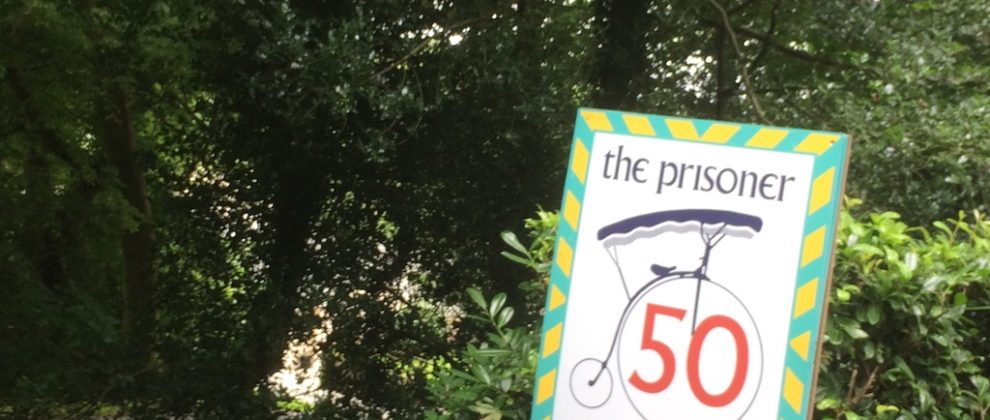
This weekend would have been the 43rd Prisoner Convention at Portmeirion. But, instead we’re under lockdown. Here’s a feature I wrote for The Sun about my favourite place to return to in North Wales.
Portmeirion looks like it has stepped out of a fairytale — yet it’s right on our doorstep.
The Italian-styled village in North Wales is a major draw with its quirky buildings, woodland walks plus numerous places to sample some Welsh hospitality.
It was the backdrop to the cult sixties TV series, The Prisoner, has served as a location for film and TV shows such as Cold Feet, and has been a haven for artists and musicians from the Jazz Age to the Sixties.
It has even launched its own take on Glastonbury with Festival Number Six, named in tribute to The Prisoner, pending a relaunch in 2021.
But it’s now the star of a new ITV series, The Village, which starts this week (Tuesday 28). The programme profiles the rural idyll through the four seasons, introducing us to nine local people who work there.
“It’s surreal here under lockdown,” says Location Manager Meurig Jones, who we meet in the first episode, leading a tour of the grounds.
“When I now stand in the normally bustling piazza, I feel like I’m in the episode of The Prisoner when its star wakes up to find a ghost town,” he adds.
“There’s just birdsong — no human sound.”
All you need is love
Portmeirion is the design folly of its founder, the architect Clough Williams-Ellis [pictured above, left, with Patrick McGoohan].
Clough bought a plot of land on the Snowdonia coast in 1925 and devoted his life to building the village, determined to prove you can work with nature to create something magical.
His vision was inspired by the colourful buildings of Italy’s Portofino and, by the time he died in 1978, his magpie-like approach to recycling architectural features had taken form in eccentric buildings such as the Gothic Pavilion, Bristol Colonnade and Hercules Hall.
The free daily walking tour offers a short introduction to some of the sites, while longer tours delve deeper, exploring some of the less-visited features.
These include a behind-the-scenes glimpse of the 17th-century Town Hall ceiling. Clough bought the ceiling, which depicts the 12 Labours of Hercules, for £13 at auction and reassembled it in North Wales.
A walk through the 70-acre woodland, meanwhile, leads to the Dog Cemetery, established by Mrs Adelaide Haig, the eccentric former owner of the original manor house on site who used to read The Bible to her beloved pets.
Book ahead for one of the specialist themed-tour options, including filming locations from The Prisoner, or places associated with The Beatles, who were frequent visitors and Prisoner fans.
The family of Brian Epstein, The Beatles’ manager, had the self-catering cottage Gate House on a short-term lease and brought the band to Portmeirion to savour the tranquillity away from the screaming fans.
George Harrison, in particular, loved the spiritual feel of the place and later returned to celebrate his 50th birthday in the village in 1993.
Let’s spend the night together
Portmeirion is normally busy by day with tour groups but, for me, the village really comes into its own at night with its brightly coloured buildings, hidden-gem statues and quirky architectural flourishes shrouded in moonlight.
You can stay overnight at the fine-dining Hotel Portmeirion, or the more relaxed Castell Deudraeth, for exclusive after-hours access to the village.
For me, however, the best way to soak up the atmosphere is by staying in one of the 13 cwtchy (that’s Welsh for cosy) self-catering cottages within the grounds of the village. All staying guests have use of the heated outdoor swimming pool and have access to The Mermaid Spa.
Amongst the cottages, Fountain is where the author Noel Coward wrote the comic play Blithe Spirit over five days in 1941.
White Horses, located along the headland from Hotel Portmeirion by the camera obscura, is where the actor Patrick McGoohan, who stared in and directed The Prisoner, stayed while filming the TV series.
“I’ve worked here since 2011 but I’m still learning about the place,” laughs Meurig. “There are so many interesting nooks and crannies to discover.”
“But, most of all, I like to sit and absorb the spirit of the place. Clough always wanted Portmeirion to be a living, breathing space, not a museum, to inspire other people.”
I’ll be back to visit Portmeirion as soon as it’s safe to do so and am already looking forward to joining the celebrations for its centenary in 2026.
But, meanwhile, I’ll be staying home and tuning in to savour my favourite little bit of Italy in North Wales on TV.
After all, everyone loves a fairytale ending.
More: Portmeirion: The Prisoner.
Read the story at The Sun Travel.
- Liked this? Try also How a Liverpool children’s home inspired the Beatles classic.
- Sign up to my newsletter for more articles and writing workshops.

